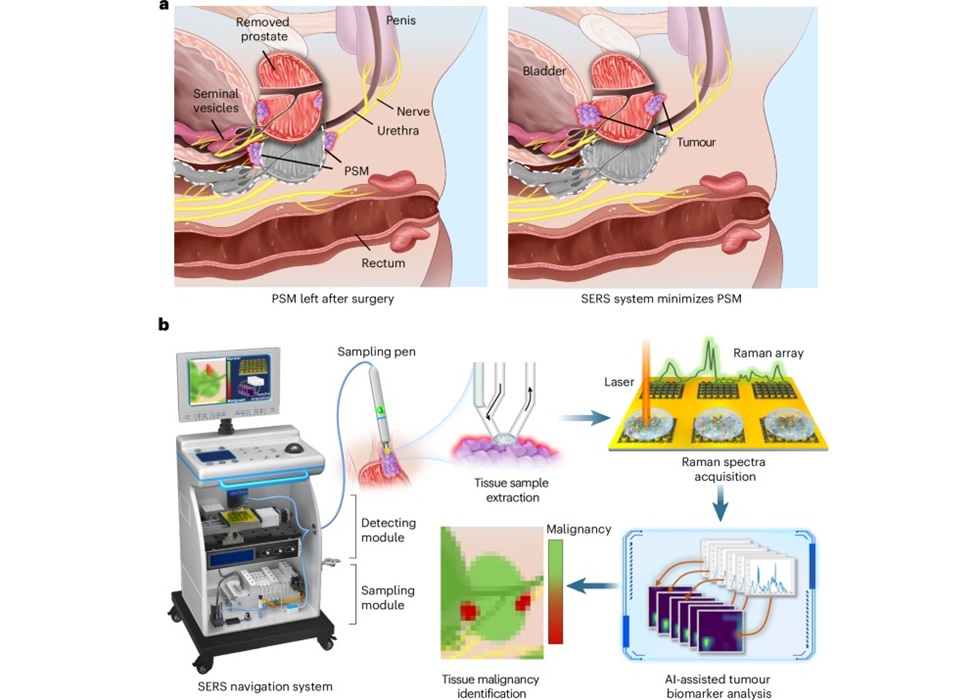Hemophilia More Prevalent Than Previously Estimated
|
By HospiMedica International staff writers Posted on 01 Oct 2019 |
A new study reveals that over 1,125,000 men around the world have inherited hemophilia, three times more than previously estimated.
Researchers at McMaster University (Hamilton, ON, Canada), the World Federation of Hemophilia (WFH; Montréal, Canada), and other institutions conducted a random-effects meta-analysis of registry data from Australia, Canada, France, Italy, New Zealand, and the United Kingdom in order to estimate the prevalence and prevalence at birth of male patients with hemophilia A or B in proportion to total male population, life expectancy disadvantage as related to prevalence at birth, and the expected number of patients worldwide.
The results revealed a prevalence of hemophilia A of 17.1 cases per 100,000 males for all severities of hemophilia, six cases for severe hemophilia A, 3.8 cases for all severities of hemophilia B, and 1.1 cases for severe hemophilia B. Prevalence at birth is 24.6 cases for all severities of hemophilia A, 9.5 cases for severe hemophilia A, five cases for all severities of hemophilia B, and 1.5 cases for severe hemophilia B. The life expectancy disadvantage (in high-income countries) is thus 30% for hemophilia A, 37% for severe hemophilia A, 24% for hemophilia B, and 27% for severe hemophilia B. The study was published on September 10, 2019, in Annals of Internal Medicine.
“The expected number of patients with hemophilia worldwide is 1,125,000, of whom 418,000 should have severe hemophilia,” said lead author Professor Alfonso Iorio, MD, PhD, director of the Hamilton-Niagara hemophilia program at McMaster University. “Knowing how many patients are out there will enable health care systems to estimate the resources needed to treat the disease, and enable drug manufacturers to increase the investment in research to match the demand of a patient population three times larger than we previously thought.”
Hemophilia, which is found almost only in men, is caused by a genetic defect. The most common type is hemophilia A, due to a lack of clotting factor VIII. Hemophilia B, which is less common, is caused by a lack in factor IX. Hemophilia is currently treated with infusions of the missing factors to prevent or stop debilitating bleeds, but treatment is expensive and scarce in many countries. Lack of treatment leads to chronic, disabling joint disease, while bleeding into organs and brain hemorrhages can lead to disability and death.
Related Links:
McMaster University
World Federation of Hemophilia
Researchers at McMaster University (Hamilton, ON, Canada), the World Federation of Hemophilia (WFH; Montréal, Canada), and other institutions conducted a random-effects meta-analysis of registry data from Australia, Canada, France, Italy, New Zealand, and the United Kingdom in order to estimate the prevalence and prevalence at birth of male patients with hemophilia A or B in proportion to total male population, life expectancy disadvantage as related to prevalence at birth, and the expected number of patients worldwide.
The results revealed a prevalence of hemophilia A of 17.1 cases per 100,000 males for all severities of hemophilia, six cases for severe hemophilia A, 3.8 cases for all severities of hemophilia B, and 1.1 cases for severe hemophilia B. Prevalence at birth is 24.6 cases for all severities of hemophilia A, 9.5 cases for severe hemophilia A, five cases for all severities of hemophilia B, and 1.5 cases for severe hemophilia B. The life expectancy disadvantage (in high-income countries) is thus 30% for hemophilia A, 37% for severe hemophilia A, 24% for hemophilia B, and 27% for severe hemophilia B. The study was published on September 10, 2019, in Annals of Internal Medicine.
“The expected number of patients with hemophilia worldwide is 1,125,000, of whom 418,000 should have severe hemophilia,” said lead author Professor Alfonso Iorio, MD, PhD, director of the Hamilton-Niagara hemophilia program at McMaster University. “Knowing how many patients are out there will enable health care systems to estimate the resources needed to treat the disease, and enable drug manufacturers to increase the investment in research to match the demand of a patient population three times larger than we previously thought.”
Hemophilia, which is found almost only in men, is caused by a genetic defect. The most common type is hemophilia A, due to a lack of clotting factor VIII. Hemophilia B, which is less common, is caused by a lack in factor IX. Hemophilia is currently treated with infusions of the missing factors to prevent or stop debilitating bleeds, but treatment is expensive and scarce in many countries. Lack of treatment leads to chronic, disabling joint disease, while bleeding into organs and brain hemorrhages can lead to disability and death.
Related Links:
McMaster University
World Federation of Hemophilia
Latest Critical Care News
- Nasal Drops Fight Brain Tumors Noninvasively
- AI Helps Optimize Therapy Selection and Dosing for Septic Shock
- Glowing Bacteria ‘Pills’ for Detecting Gut Diseases Could Eliminate Colonoscopies
- Skin-Permeable Polymer Patch Delivers Insulin Non-Invasively Through Skin
- Nanogel Technology Almost 100% Effective in Destroying Drug-Resistant Bacteria Within Hours
- Wearable Ultrasound Sensor Delivers Noninvasive Treatment Without Surgery
- Gel-Free ECG System to Transform Heart Health Diagnosis
- Biodegradable Patch Repairs Damaged Tissue After Heart Attack
- Magnetically Guided Microrobots to Enable Targeted Drug Delivery

- Smart Nanomaterials Detect and Treat Traumatic Brain Injuries Simultaneously
- Earlier Blood Transfusion Could Reduce Heart Failure and Arrhythmia in Heart Disease Patients
- 'Smart' Shirt Detects Epileptic Seizures in Real Time
- Skin Patch Measures Effectiveness of Flu/COVID Vaccines in 10 Minutes
- Complete Revascularization Reduces Risk of Death from Cardiovascular Causes
- Tiny Fish-Inspired Robots Navigate Through Body to Deliver Targeted Drug Therapy
- Coronary Artery Stenosis Could Protect Patients from Pulmonary Embolism Effects
Channels
Surgical Techniques
view channelNovel Endoscopy Technique Provides Access to Deep Lung Tumors
Detecting lung cancer early can save lives, but diagnosing small tumors deep in the outer regions of the lungs remains a major clinical challenge. Although CT scans frequently identify tiny suspicious... Read more
New Study Findings Could Halve Number of Stent Procedures
When a coronary artery becomes acutely blocked during a heart attack, opening it immediately is essential to prevent irreversible damage. However, many patients also have other narrowed vessels that appear... Read morePatient Care
view channel
Revolutionary Automatic IV-Line Flushing Device to Enhance Infusion Care
More than 80% of in-hospital patients receive intravenous (IV) therapy. Every dose of IV medicine delivered in a small volume (<250 mL) infusion bag should be followed by subsequent flushing to ensure... Read more
VR Training Tool Combats Contamination of Portable Medical Equipment
Healthcare-associated infections (HAIs) impact one in every 31 patients, cause nearly 100,000 deaths each year, and cost USD 28.4 billion in direct medical expenses. Notably, up to 75% of these infections... Read more
Portable Biosensor Platform to Reduce Hospital-Acquired Infections
Approximately 4 million patients in the European Union acquire healthcare-associated infections (HAIs) or nosocomial infections each year, with around 37,000 deaths directly resulting from these infections,... Read moreFirst-Of-Its-Kind Portable Germicidal Light Technology Disinfects High-Touch Clinical Surfaces in Seconds
Reducing healthcare-acquired infections (HAIs) remains a pressing issue within global healthcare systems. In the United States alone, 1.7 million patients contract HAIs annually, leading to approximately... Read moreHealth IT
view channel
EMR-Based Tool Predicts Graft Failure After Kidney Transplant
Kidney transplantation offers patients with end-stage kidney disease longer survival and better quality of life than dialysis, yet graft failure remains a major challenge. Although a successful transplant... Read more
Printable Molecule-Selective Nanoparticles Enable Mass Production of Wearable Biosensors
The future of medicine is likely to focus on the personalization of healthcare—understanding exactly what an individual requires and delivering the appropriate combination of nutrients, metabolites, and... Read moreBusiness
view channel
Philips and Masimo Partner to Advance Patient Monitoring Measurement Technologies
Royal Philips (Amsterdam, Netherlands) and Masimo (Irvine, California, USA) have renewed their multi-year strategic collaboration, combining Philips’ expertise in patient monitoring with Masimo’s noninvasive... Read more
B. Braun Acquires Digital Microsurgery Company True Digital Surgery
The high-end microsurgery market in neurosurgery, spine, and ENT is undergoing a significant transformation. Traditional analog microscopes are giving way to digital exoscopes, which provide improved visualization,... Read more
CMEF 2025 to Promote Holistic and High-Quality Development of Medical and Health Industry
The 92nd China International Medical Equipment Fair (CMEF 2025) Autumn Exhibition is scheduled to be held from September 26 to 29 at the China Import and Export Fair Complex (Canton Fair Complex) in Guangzhou.... Read more















